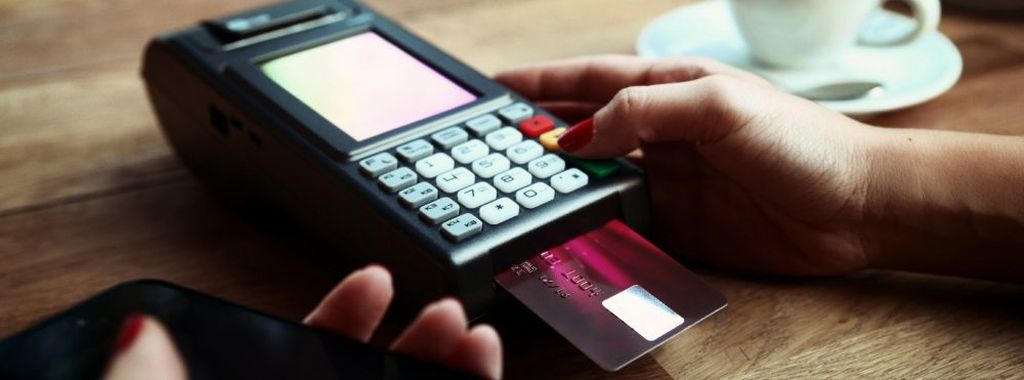Last year, card finally conquered cash. A debit or credit card became the most popular way for customers to pay for their retail purchases, according to the British Retail Consortium, with debit card purchases overtaking cash payment for the first time.
The mainstream use of credit or debit cards is only going to grow, so it’s important for you to offer card payment as an option for customers.
The first step is learning how chip and PIN machines work and which Chip & PIN terminal is best for your small business, so you can get ready to accept debit and credit card payments to improve efficiency and customer satisfaction.
What is a Chip and PIN machine?
Also called PDQ machines or card readers, chip and PIN machines process payments made by debit and credit cards. Customers insert their card into the machine and then enter a four-digit PIN (personal identification number), which has been given to them by their bank, to verify the transaction.
Customers now generally expect to be able to use their card to pay for items or services. The BRC reports that 75% of sales in 2016 were paid for by card, amounting to 10.3 billion debit, credit, and charge card transactions.
To meet this demand, many major retailers and small businesses are now equipped with chip and PIN machines.
How does a Chip and PIN machine work?
Chip and PIN cards are designed to be more secure than the old swipe system, helping to protect people from debit and credit card fraud.
The chip is the bit that stores the card holder’s data, which was previously only stored on magnetic strip. Unlike the old swipe cards, which could only store and transmit the card number and expiration date, the chip can also process information.
Now, when you insert a debit or credit card into a payment terminal, the chip on the card can interact with the machine. This means it can encrypt data, helping to process transactions more securely.
The chip and the machine communicate to authenticate the card and ensure it is valid. Then the customer must enter their four-digit PIN to verify the transaction. If the PIN matches the numbers stored on the chip, the transaction is pushed through for approval.
If the transaction is approved, the payment is sent to the retailer’s merchant account and processed before being transferred to their business account.
What is the best chip and PIN payment machine?
There are chip and PIN machines with different capabilities to suit different businesses. The best one for you will depend on what you need to carry out your daily operations quickly and efficiently.
-
Countertop chip and PIN machines
Commonly used by shops, salons, and other high street retailers, countertop chip and PIN machines plug into the broadband or phone lines and are designed to fit easily on the shop counter. They’re perfect for establishments that take payment in a fixed location.
-
Portable chip and PIN machines
Portable chip and PIN machines use Bluetooth to connect to the base from up to 100m away, so they can be used virtually anywhere on the shop premises. Able to run hours on a single charge, they’re commonly used in cafes, restaurants, pubs, and bars, as staff can bring payment directly to the customer.
-
Mobile chip and PIN machines
Able to connect to the mobile network using a pre-installed SIM card, mobile chip and PIN machines can process card payments from anywhere in the UK. Long-life battery means they can last all day, making it a great option for couriers, taxi drivers, and retailers who do business on the go.
How much do chip and pin machines cost?
The overall cost of having a chip and pin machine depends on your business and the card terminal provider. Typically, you’ll pay two main sets of fees:
- A monthly rental fee for the card terminals.
- Merchant fees for each transaction (which will usually be a percentage or flat rate).
The overall cost will be based on your individual business needs. Chip and PIN machine providers will typically take factors such as your turnover and average daily transactions into account when providing you with a quote. Our experts will be able to give you a specific idea of how much a chip and PIN machine will cost you – get in touch for more information.
How to get a chip and PIN machine for a small business
We can set you up with a small business card machine in as little as three days. First, get a free online quote.
We will then set you up with a merchant account. Once you’ve been approved, we’ll send out your card terminal, along with simple instructions that outline how you can set it up yourself. Our 24/7 support team are available to help if you have any questions along the way.
All of our terminals are equipped with Contactless, Apple Pay, and Android Pay, so your business will be ready to embrace the next wave of payment technology – read our guide to find out more about contactless payments.
